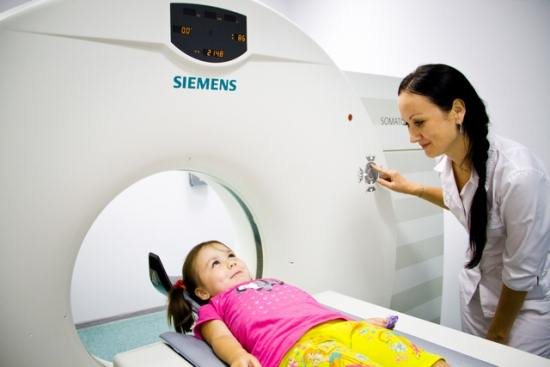- Types of stereotypy
- Causes of stereotypy
- How to reduce stereotypy in autistic children
- How to treat stereotypy in children with autism
Stereotypes are usually called any episodes of aimlessly repeating actions, movements, words or individual sounds.
An alternative term for stereotypies is self-stimulation or stimming, stims (derived from the English words stimulation, to stimulate). Certain manifestations of stereotypical behavior are characteristic of people of any age and psycho-emotional make-up. These include habits such as frequent unconscious licking of lips, scratching the nose, rhythmically tapping the table with fingers or a pencil, swinging a leg, wrapping a strand of hair around a finger, and much more. Symptoms of childhood autism appear not only in the form of stereotypy, but it is this symptom that is most obvious in the first stages.
Stereotypy in autism is characterized by a pathological intensification of such repetitive behavior to such an extent that it becomes socially unacceptable and/or begins to cause serious difficulties in everyday life, communication, learning, work, etc. This is what primarily distinguishes stereotypy in autistic people (autistic stereopathy) from “mild” stereotypical behavior of neurotypical people.
ICD-9
ICD-9 had a category for “stereotypical repetitive movements” (307.3307.3)[2]. As described in the classification, the key feature of this diagnosis is repetitive stereotypic movements that are not associated with any mental or neurological disease[2]. Includes rocking, rotation, head nodding, nodding spasms, winking and finger tapping[2]. It mainly occurs in mental retardation with an underlying disorder or in a monotonous environment[2].
Stereotype: is the beast really that scary?
When we hear a five-year-old child on the playground shout “baobab” for the tenth time in a row, we automatically think: “There’s clearly something wrong with him.” Indeed, the presence of “strange” repetitive behaviors, activities and specific interests is one of the three main diagnostic features of autism (ICD-10, DSM-V). In the literature and in practice, there are many examples of interventions aimed specifically at this feature of ASD. At the same time, stereotypies are also characteristic of people with intellectual and sensory impairments, tardive dyskinesia, and movement disorders, including relatively healthy, from the point of view of modern psychiatry, adult members of the population. A number of studies have found that normotypical preschoolers at a certain stage of development (6-24 months) tend to demonstrate so-called primary stereotypies: similar, but not as frequent and long-lasting behavior as their peers with ASD. Also among adults there are those who habitually tap their feet out of impatience, snap their fingers, scratch the back of their heads or toss a ball while thinking about something, and finally bite their nails or smoke when going through difficult moments in life. Therefore, the very fact of stereotypy in diagnosis is not so critical: what is important is the extent to which this behavior deviates from age and social boundaries.
Stereotypy is often formed in infancy (up to two years) and is manifested by a variety of repeated, stable socially dysfunctional movements, actions with objects, postures and sounds made, sound combinations, words and remarks. It usually occurs when the child is excited, looks tired, has nothing else to do to entertain himself, or is stressed. Many people mistakenly call this “stimming”, believing that such behavior is always autostimulative and aimed at obtaining pleasant sensations.
Outwardly, stereotypy can be expressed quite simply or, conversely, look like an intricate ritual.
Examples:
- Swaying the whole body;
- Torsion around its axis;
- Marching in place;
- Bouncing;
- Stroking yourself;
- Scratching your own skin;
- Shaking, flapping, clapping and twirling the arms;
- Manipulation of objects in the field of peripheral vision;
- Walking on tiptoes;
- Running in a circle;
- Crossing legs;
- Growl;
- Building chains of objects;
- Monotonous, meaningless actions with toys;
- Straightening wrinkles on clothes;
- Immediate and delayed echolalia;
- Throwing objects;
- Biting a fountain pen;
- Hitting your head on a surface;
- Drawing a “closed” road sign everywhere;
- Braiding hair for all dolls;
- Telling everyone the composition of shaving foam;
It is important to distinguish stereotypies from other similar phenomena, such as motor tics. Both the first and second occur with some degree of periodicity and worsen in stressful situations and with emotional arousal; moreover, they can be combined with each other. However, tics develop at a later age (not earlier than 5-7 years), are more variable in topography (external manifestations), lack rhythm, appear suddenly and disappear just as unexpectedly, including during sleep, and are often associated with discomfort. If stereotypic activity can be distracted with the help of other stimuli, then the person tries to suppress tics himself, including by resorting to drug therapy. It’s one thing when a child blinks quickly, deliberately looking at a bright ceiling light, another ─ when his eye twitches and he clearly tries to stop it, squeezing his eyelid with his fingers. At the slightest suspicion of the latter option, you should consult a specialized doctor (neurologist) for the purpose of differential diagnosis.
Let us once again indicate that stereotypies:
Methods for correcting stereotypies in children
S.S. Morozova offers the following correction methods:
- Switching. Stereotypical actions “switch” to other actions. But only those that the child likes or at least do not evoke negative emotions in him. For example, if a child begins to sway, they carefully stop him and offer him to play something he likes instead (rolling cars or putting together a puzzle). If a child has motor stereotypies, for example, he senselessly but incessantly fiddles with his fingers instead of studying in class, he can be asked to put his hands on the table; if he does not respond to words, then you need to come up and help him do this.
- Substitution. During this process, the child is replaced with one stereotype by another, but one that is more socially acceptable and not so meaningless. For example, if a child is rocking on the spot and exhibits obsessive movement syndrome, then you can take him to swing on a swing. Monotonous jumps of motor stereotypies can be replaced by jumping on a trampoline or jumping rope. One stereotype can be replaced by different types of activities. They will be time limited and more controllable.
- Transformation. This is similar to substitution. In essence, this is substitution, but only in this case the meaning of the actions changes. The actions will be more beneficial for the child's development. For example, if a child likes to aimlessly manipulate small details of a construction set, he can be taught to design purposefully - to build a house from a construction set, for example.
RELATED MATERIALS: How to recognize and cope with psychological shock
- Interrupt. This method is more drastic. The child is deprived of the opportunity to perform stereotypical actions or is deprived of rituals. For example, if he is used to all the doors being closed, he is gradually accustomed to the fact that not all doors in the room may be closed and this is normal. First, open the door slightly, and then bring it completely open. If a child is used to eating from one plate, first they select something similar to it, for example, but slightly different, gradually accustoming the child to the new dishes.
- Developing flexibility. At the same time, the child is introduced to new methods of stereotypy that interact with the old ones. Replacement is gradually taking place. This process is long, which must be continuous, it contributes to treatment. So that the child gradually adapts to new living conditions.
According to many experts, stereotypy cannot disappear on its own in children. In this case, not only drug treatment is required, but also the help of a psychologist, and in case of speech disorders, classes with a speech pathologist and speech therapist. Success can only be achieved through long, slow and careful corrective work. This is worth thinking about for parents who hope that “it will go away on its own.” Naturally, we are talking about pathological stereotypies, a symptom of disease. Stereotypes themselves are not essentially diseases that can only be treated by doctors. This is behavior or actions that most often require psychotherapy and psychocorrection, and the attentive attitude of parents and teachers.
Recommendations and warnings
The first step is to analyze the feelings that the autistic person is trying to stimulate; only then can the correct alternative to stimulating behavior be selected.
Stimming can be replaced with the following self-stimulation options:
- visual: cartoons, educational programs, globe, kaleidoscope, laser pointers, bright balls, etc.;
- sound: cartoons and programs, playing or listening to music on a tablet, musical toys;
- sensory: the use of fabrics with different textures (tissue massage of the legs, arms, back), playing with sand/clay/plasticine, soft textured toys, shower (preferably with massage);
- motor: trampoline, carousels, hammocks, fitballs, rocking toys;
- scent: aroma candles, aroma oils, scented pens/pencils, other scented products;
- Oral: gummies, shakes with straws, foods with sour/sweet or hot/cold contrast.
Special recommendations for daily routine
Autistic children with the cutaneous vector are often hyperactive and extremely restless. This disinhibition leads to excessive stimulation of the nervous system, especially towards the end of the day. Many parents of such children complain that they cannot establish a normal routine.
Meanwhile, this is the first thing to do in such a situation. Even a healthy child with a skin vector feels the need to have rules, a daily routine and actions, a system. Autistic people are no exception. But giving them rules and routines requires much more strength and consistency from parents.
All routine moments (feeding, walking, exercising, sleeping) should take place strictly at the same time every day. At first, it may seem that you are building a barracks for your child with your own hands, but this is not at all the case. At first he may protest, but then he will obey the repeated rules and feel better within the given structure of time. Evening sleep will improve.
The system of prohibitions and restrictions must be observed by all family members without exception. If necessary, let compassionate grandmothers read this article. Get together and discuss once what the child is allowed and what is not, and in what cases options are possible.
Further, the system of rules and restrictions should work equally for dad, mom, and other family members. If a child is strictly forbidden to touch medications, then no one allows it. And it doesn’t matter that it’s not at all dangerous to rustle with empty packaging.
Taking into account the child’s field behavior, the space should also be structured into zones. Such a child should not eat and study in the same place. No matter how small the apartment is, try to divide it into zones: this is a corner for playing, this is a table for studying, and we eat only in the kitchen.
How to reduce stereotypies
Here are some ideas on how you can reduce your time spent on stereotyping while developing your communication skills:
- Medical examination to rule out physical causes of stereotypies, for example, ear infections, chronic pain, migraines, retinal detachment.
— Improving the sensory and emotional environment so that the child is more comfortable and the need for self-comfort is reduced.
— Sports, exercise and other intense physical activity reduce stereotypies. This may be due to the fact that exercise releases beta-endorphins, as does stereotypy.
— Continue communication, even if stereotypes arise. James MacDonald suggests that people with autism perceive the world around them more through sensations and actions, while neurotypicals perceive the world more through thoughts and language. If you understand this difference, then stereotypes become more meaningful. MacDonald recommends doing different activities in turn, without trying to stop the child’s stereotypies, just involving him in the activity is enough. Gradually, joint activities will become more familiar and attractive for the child, and this will naturally reduce stereotypy.
— Creating a positive association between stereotypy and social interaction. One way to use stereotypy for learning is to allow stereotypy as a reinforcer or reward after a short period of playing or working together. Julia Moore believes that if you set aside a scheduled time for stimming after communication, this will allow the child to be himself, motivate him to communicate more often, and at the same time, the total time he spends on stereotypies will decrease.
— Join the stereotype! Some approaches ask adults to engage in self-stimulating behavior to initiate communication. For example, if your child is spinning plates, start spinning the plates too. If your child is rocking, start rocking next to him too. My son would “stimulate” by raising his hand and talking to her as if he were looking in a mirror. He was delighted when I started doing this with him!
You can then add new things to your interaction, such as gestures so your child can ask for what he wants. The basic principle is to offer the child experiences that will produce similar sensations to stereotypy, but that are more functional and will promote greater self-regulation.
In other words, to reduce stereotypy, offer a replacement that is more attractive!
Diagnostics
The diagnostic program includes the following activities:
- visual examination of the child;
- clarification of the current clinical picture, collection of personal and family history;
- studying the patient's medical history.
In addition, additional laboratory and instrumental research methods may be required:
- general and biochemical blood test;
- CT, MRI of the brain;
- psychiatric tests.

Carrying out a computed tomography scan for a child
You may need to consult a neurologist, ophthalmologist, otolaryngologist, child psychologist, or speech therapist.









